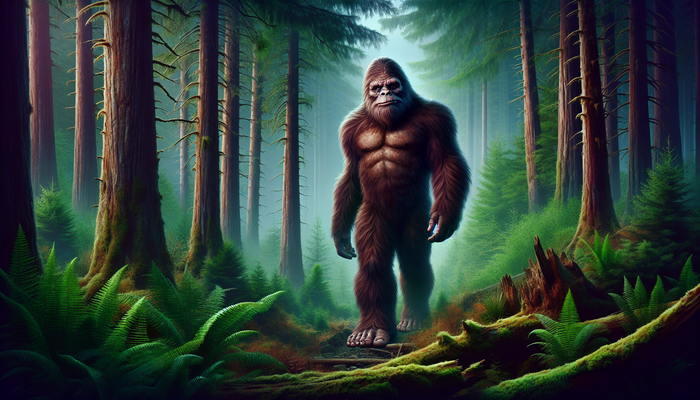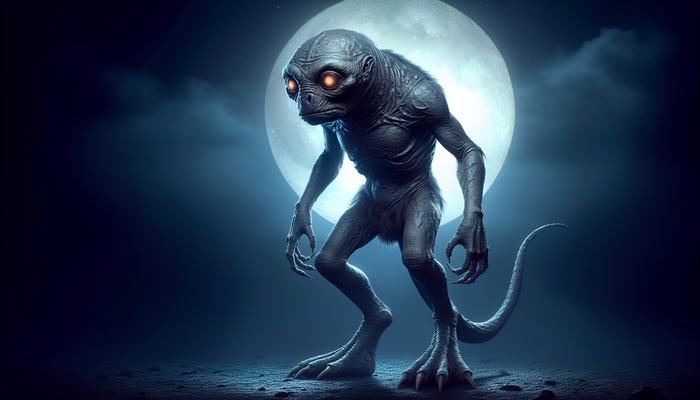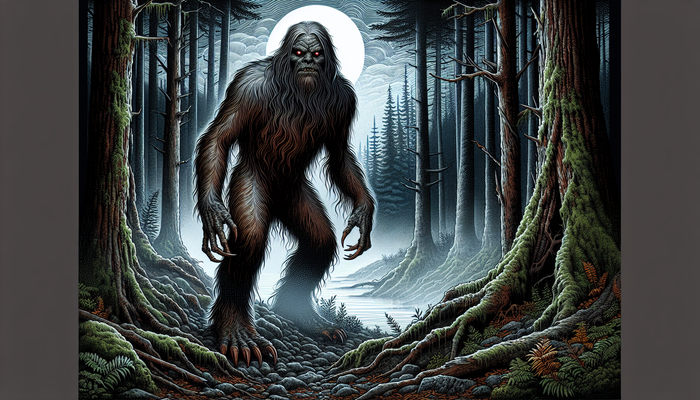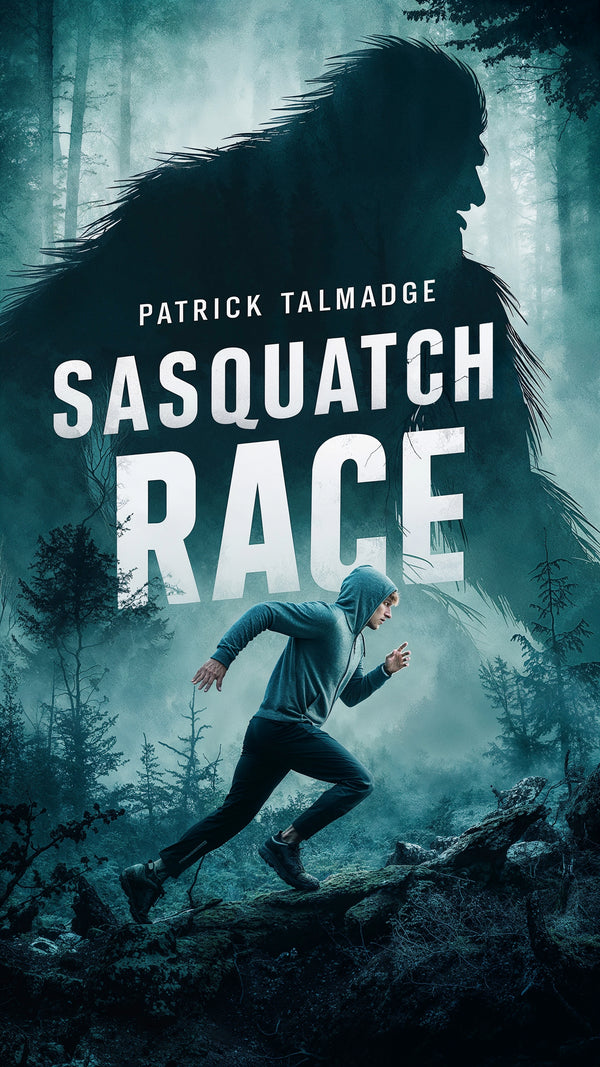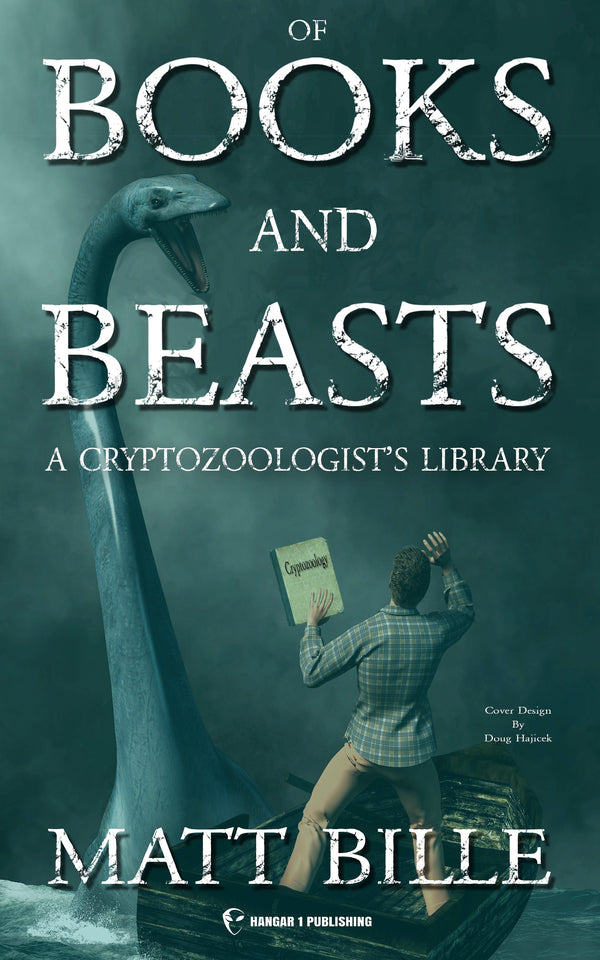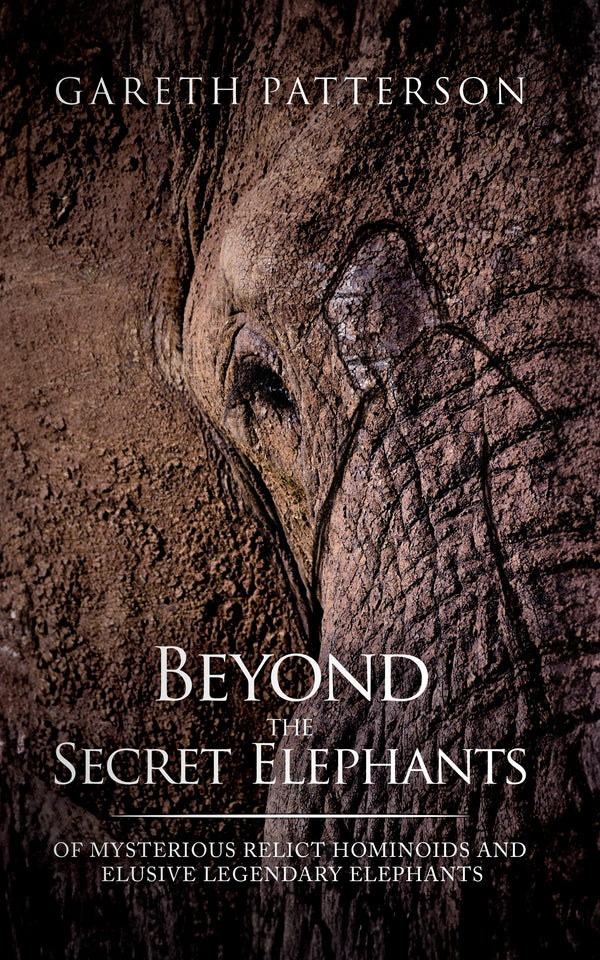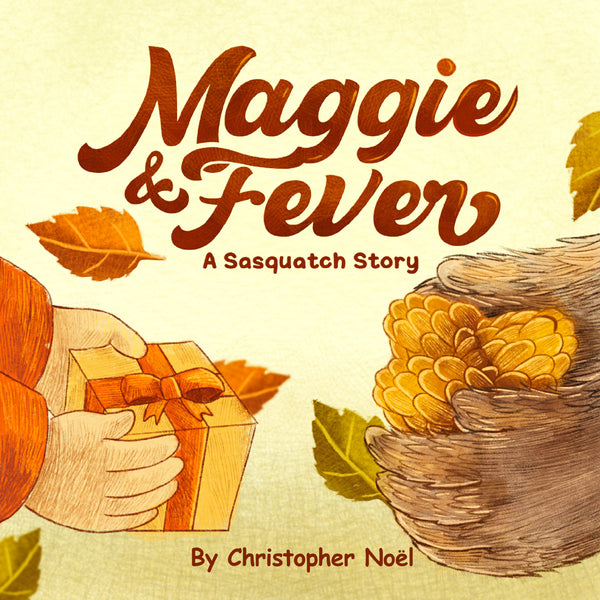Exploring Texas Folklore Creatures: Legends and Myths of the Lone Star State
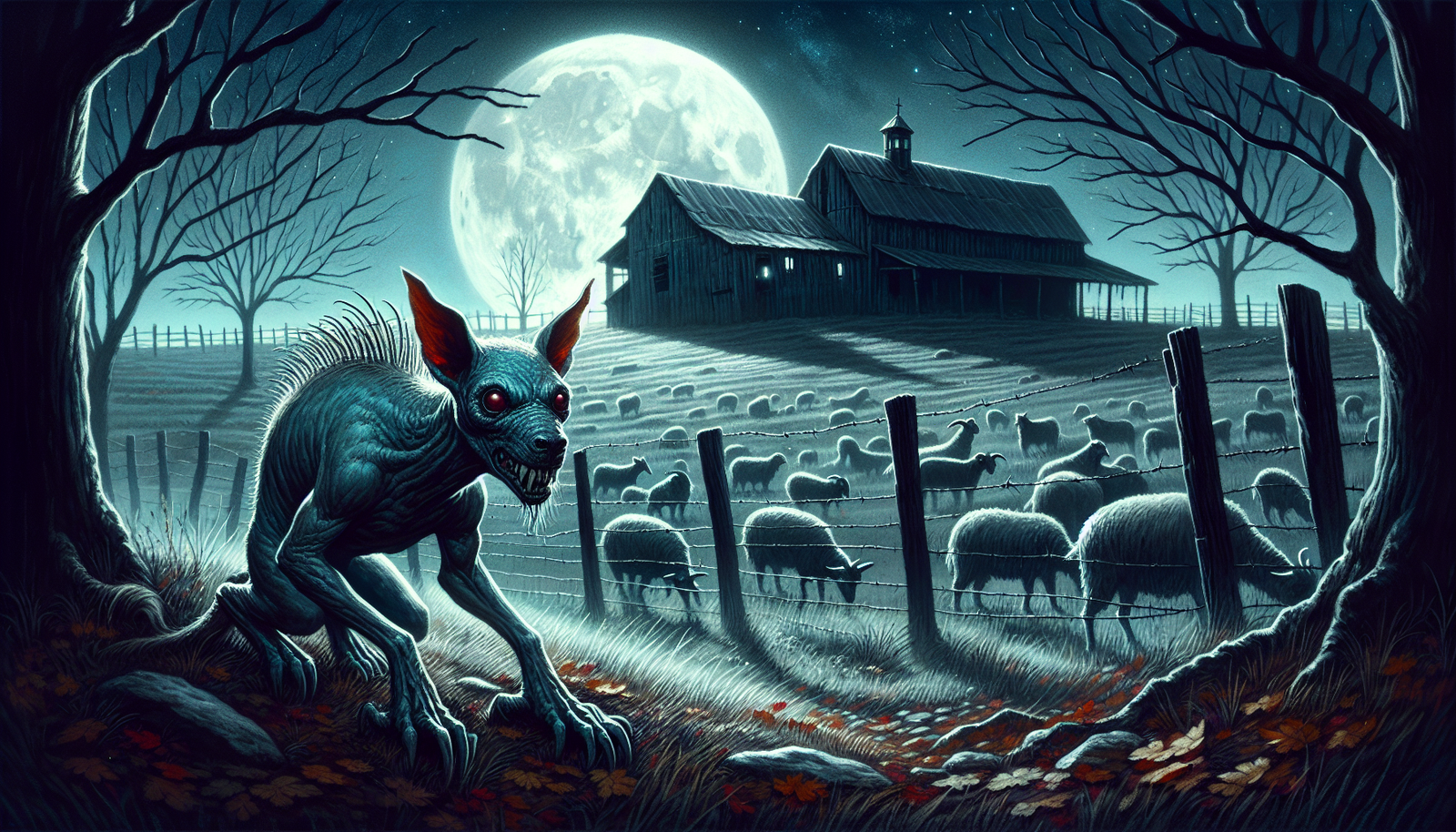
By Lucas Jennings, Cryptozoologist
Texas, a land of vast prairies, dense forests, and sprawling cities, is home to more than just its famous longhorns and oil fields. Beneath the surface of its rich history lies a tapestry of folklore woven with tales of mysterious creatures that have captivated generations. These legends, passed down through whispered stories and fireside chats, paint a picture of a Texas that's wilder, stranger, and more magical than meets the eye.
From the blood-sucking Chupacabra to the mournful cries of La Llorona, Texas folklore creatures embody the fears, hopes, and cultural heritage of the Lone Star State. They're more than just campfire tales; they're a reflection of the diverse cultures that have shaped Texas over centuries. These creatures lurk in the shadows of our imagination, challenging our understanding of the natural world and reminding us that there's always more to discover.
The Chupacabra: Texas's Notorious Goat-Sucker
Picture this: You're a rancher in South Texas, making your usual rounds at dawn. As you approach your livestock, you notice something's off. Several goats lie motionless, drained of blood, with peculiar puncture wounds on their necks. What could have done this? Enter the Chupacabra, Texas's most infamous cryptid.
The name "Chupacabra" literally translates to "goat-sucker" in Spanish, and it's a fitting moniker for this blood-draining beast. While the legend originated in Puerto Rico in the 1990s, it quickly found a home in the fertile soil of Texas folklore. Here, the creature took on a life of its own, evolving from its original reptilian description into something uniquely Texan.
In the Lone Star State, the Chupacabra is often described as a hairless, dog-like creature with a pronounced spinal ridge, oversized canine teeth, and sometimes, even leathery or scaly skin. It's as if someone took a coyote, stripped it bare, and gave it a vampiric makeover. But don't be fooled by its canine appearance – this isn't your average stray dog.
The Chupacabra made headlines in 2007 when Phylis Canion, a rancher from Cuero, Texas, stumbled upon a strange carcass on her property. The creature, with its hairless blue-grey skin and elongated snout, sparked a media frenzy. Dubbed the "Texas Blue Dog," it was initially hailed as proof of the Chupacabra's existence. However, DNA tests later revealed a less sensational truth: it was a coyote with a severe case of mange.
But scientific explanations haven't dampened the Chupacabra's hold on the Texan imagination. Reports of livestock found drained of blood continue to circulate, keeping the legend alive. Some describe eerie encounters with red-eyed beasts in the dead of night, while others swap stories of mysterious tracks found near mutilated animals.
The Chupacabra has become more than just a cryptid; it's a cultural phenomenon. You'll find its likeness on t-shirts, mugs, and even as the namesake for local brews. It's a testament to the creature's enduring appeal and its ability to tap into our fascination with the unknown.
But why has this blood-sucking beast captured our collective imagination? Perhaps it's because the Chupacabra represents our primal fears of the dark, unknown predators lurking just beyond the light of our campfires. Or maybe it's a modern manifestation of age-old vampire myths, adapted to the rugged landscape of rural Texas.
Whatever the reason, the Chupacabra serves as a reminder that even in our modern, scientifically advanced world, there's still room for mystery. It challenges us to question what we think we know about the natural world and keeps us looking over our shoulders when we venture into the wild Texas night.
La Llorona: The Weeping Woman of Texas Waters
As the sun sets over the Rio Grande, a mournful wail echoes across the water. Is it just the wind, or something more sinister? According to Texas folklore, it could be the cry of La Llorona, the Weeping Woman, forever searching for her lost children.
La Llorona's tale is as tragic as it is terrifying. While versions vary, the core of the story remains the same: a beautiful woman, driven to despair, drowns her children in a fit of rage or madness. Realizing the horror of her actions, she takes her own life, only to be condemned to wander the earth, eternally seeking the children she can never reclaim.
In Texas, La Llorona is often associated with bodies of water – rivers, creeks, and even drainage ditches in urban areas. She's described as a spectral figure dressed in flowing white, her face hidden behind a veil of tears. Some say her feet never touch the ground as she glides along the water's edge, her sorrowful cries piercing the night.
The legend of La Llorona serves multiple purposes in Texan culture. For parents, it's a cautionary tale, used to keep children away from dangerous waters. "Don't go near the river," they might say, "or La Llorona will get you!" It's an effective deterrent – after all, what child wants to be snatched by a ghostly woman?
But La Llorona is more than just a boogeyman to scare kids. Her story resonates on a deeper level, touching on themes of love, betrayal, and the consequences of our actions. In some versions of the tale, La Llorona drowns her children after being abandoned by their father for a younger woman. This aspect of the legend speaks to the pain of betrayal and the destructive power of jealousy.
The Weeping Woman has left an indelible mark on Texas culture. Her story has been adapted into countless books, films, and songs. In San Antonio, you might hear whispers about "Hollering Woman Creek," said to be one of La Llorona's haunting grounds. Artists have depicted her in paintings and sculptures, capturing the sorrow and horror of her eternal plight.
What makes La Llorona so enduring? Perhaps it's the universal themes in her story. The fear of losing a child, the guilt of irreversible actions, the concept of eternal punishment – these are ideas that resonate across cultures. Or maybe it's the way her legend blends indigenous beliefs with Catholic concepts of sin and penance, reflecting the cultural melting pot that is Texas.
La Llorona's tale also serves as a form of social commentary. Some interpret her story as a metaphor for the loss of indigenous culture following the Spanish conquest. In this reading, La Llorona represents the native people, mourning the loss of their children – their way of life – to colonization.
Whether seen as a ghostly apparition, a metaphor for cultural loss, or simply a chilling campfire tale, La Llorona continues to haunt the rivers and streams of Texas. Her cries serve as a reminder of the power of folklore to shape our perceptions and behaviors, keeping ancient fears and timeless lessons alive in our modern world.
The Lake Worth Monster: Fort Worth's Goat-Man Sensation
Imagine a warm summer night in 1969. You're parked by Lake Worth, enjoying the evening with friends. Suddenly, a bizarre creature – part man, part goat – leaps from the trees, landing on your car with a thud. This isn't the opening scene of a B-movie; it's the incident that kicked off the legend of the Lake Worth Monster, one of Texas's most infamous cryptids.
The Lake Worth Monster, also known as the Goat-Man, burst onto the scene in July 1969, causing a sensation in Fort Worth. Described as a half-man, half-goat creature covered in scales and fur, standing seven feet tall, the monster captured the imagination of locals and the attention of the national media.
The first reported sighting set the tone for the monster's dramatic debut. A couple claimed the creature jumped from a tree onto their car, leaving an 18-inch scratch along the side. This was just the beginning. Over the next few weeks, more sightings poured in, each one adding to the growing legend.
One of the most famous incidents involved a group of terrified picnickers who claimed the monster hurled a tire at them from a nearby cliff. The story spread like wildfire, drawing hundreds of monster hunters to Lake Worth. Armed with rifles and flashlights, they combed the area, hoping to catch a glimpse of the elusive Goat-Man.
The Lake Worth Monster wasn't camera-shy, either. A man named Allen Plaster claimed to have photographed the creature, capturing what appeared to be a large, white, furry figure. While the photo's authenticity has been debated, it added fuel to the already blazing fire of public interest.
As the summer wore on, the sightings continued. Some described the monster as having glowing orange eyes, while others insisted it let out blood-curdling screams. The local police were inundated with reports, and the Fort Worth Nature Center became ground zero for monster hunters.
But what was really behind these sightings? Skeptics pointed out that the monster's appearance coincided with the release of the horror film "The Night of the Blood Beast." Others suggested it was nothing more than local teenagers pulling an elaborate prank. Some even speculated that it might be an escaped circus gorilla, though no local circuses reported any missing animals.
As quickly as it had begun, the Lake Worth Monster phenomenon seemed to die down when school resumed in the fall. But the legend was far from over. The Goat-Man had firmly established itself in local folklore, becoming a part of Fort Worth's identity.
Today, the Lake Worth Monster is celebrated rather than feared. The Fort Worth Nature Center hosts an annual Lake Worth Monster Bash, complete with costume contests, storytelling, and monster-themed activities. It's a testament to how a local legend can transform from a source of fear to a point of pride.
The Lake Worth Monster represents more than just a scary story. It's a snapshot of a particular moment in American culture, when the Space Age collided with age-old fears of the unknown. In the same summer that humans first walked on the moon, Texans were captivated by the idea of a mysterious creature lurking in their own backyard.
This juxtaposition highlights our enduring fascination with the unexplained. Even as science and technology advance, we still find room in our worldview for the mysterious and the monstrous. The Lake Worth Monster serves as a reminder that sometimes, we want to believe in the impossible.
Whether the Goat-Man was a hoax, a case of mass hysteria, or something truly unexplained, its impact on Fort Worth's culture is undeniable. It's a prime example of how cryptids can shape local identity, turning a fleeting moment of fear into a lasting source of community pride and tourism.
The Wampus Cat: Shape-Shifting Feline of East Texas
Deep in the piney woods of East Texas, where shadows play tricks on the eyes and strange sounds echo through the night, tales of the Wampus Cat have been whispered for generations. This isn't your average stray tomcat – the Wampus Cat is a creature of Native American legend, a shape-shifting beast that blurs the line between animal and spirit.
The origins of the Wampus Cat can be traced back to Cherokee folklore. According to the legend, a woman of the tribe once disguised herself in a cougar skin to spy on a sacred men's meeting. When she was discovered, the tribal elders punished her by transforming her into a half-woman, half-cat creature, forever caught between two worlds.
In Texas, the Wampus Cat has taken on a life of its own, adapting to the local landscape and culture. It's often described as a large, fearsome feline, sometimes walking on two legs, with glowing eyes that pierce the darkness. Some say it has the ability to hypnotize its prey, while others claim it can vanish into thin air, only to reappear miles away in the blink of an eye.
Sightings of the Wampus Cat have been reported across East Texas, from the dense forests near Nacogdoches to the swamps along the Louisiana border. Hunters tell stories of eerie caterwauling echoing through the woods, sending shivers down their spines. Campers speak in hushed tones about glowing eyes watching them from the underbrush, disappearing when they try to get a closer look.
One particularly chilling account comes from a group of hikers in the Davy Crockett National Forest. They described encountering a large, cat-like creature with "human-looking eyes" that seemed to be following them along the trail. When they tried to photograph it, the creature vanished, leaving behind only a set of unusually large paw prints.
The Wampus Cat has become more than just a creature of folklore – it's a part of East Texas culture. Several high schools in the region have adopted the Wampus Cat as their mascot, embracing the creature's fierce reputation. Local artists have depicted the beast in paintings and sculptures, often emphasizing its dual nature as both animal and spirit.
But what makes the Wampus Cat so enduring in Texas folklore? Perhaps it's the way the creature embodies the wild, untamed spirit of the East Texas wilderness. In a world where humans have mapped and categorized nearly every inch of the planet, the Wampus Cat represents the possibility that there are still mysteries out there, waiting to be discovered.
The shape-shifting aspect of the Wampus Cat also speaks to our fascination with transformation and the blurring of boundaries. It's a creature that exists between worlds – not fully animal, not fully human, not fully spirit. This liminal nature makes it a powerful symbol in folklore, representing the unknown and the uncategorizable.
Moreover, the Wampus Cat serves as a cautionary tale. In many versions of the legend, the woman is punished for her curiosity and her transgression of gender boundaries. While modern interpretations often challenge this aspect of the story, it reflects the way folklore often encodes social norms and warnings.
Whether seen as a fearsome predator, a spiritual entity, or a symbol of the untamed wilderness, the Wampus Cat continues to prowl through the forests of East Texas folklore. Its legend reminds us that even in our modern world, there's still room for mystery, transformation, and the thrill of the unknown.
The Donkey Lady: San Antonio's Tragic Phantom
In the outskirts of San Antonio, where city lights fade and country roads wind into darkness, locals whisper about a bridge. But it's not the bridge itself that sends shivers down their spines – it's the creature said to haunt it. Meet the Donkey Lady, one of Texas's most tragic and terrifying folklore figures.
The legend of the Donkey Lady is as heartbreaking as it is horrifying. While details vary, the core of the story revolves around a woman who suffered unimaginable tragedy. In the most common version, she was a loving wife and mother living on a small farm in the late 1800s or early 1900s. One fateful night, her husband, in a drunken rage, set fire to their home with her and their children inside.
The woman managed to escape the inferno, but at a terrible cost. The fire had horribly disfigured her, melting her fingers into hoof-like appendages and elongating her face into a grotesque, equine shape. Her children, tragically, did not survive. Driven mad by grief and pain, she fled into the wilderness, where she's said to have transformed fully into a half-woman, half-donkey creature.
Since then, the Donkey Lady has been said to haunt the areas around San Antonio, particularly a bridge that now bears her name. Visitors to the Donkey Lady Bridge report hearing the clip-clop of hooves on the wooden planks, accompanied by heart-wrenching brays that sound almost human. Some claim to have seen a shadowy, hunched figure with an elongated face, watching them from the banks of the creek below.
One particularly chilling account comes from a group of teenagers who decided to test their courage by visiting the bridge at midnight. They reported hearing the sound of hooves approaching their car, followed by the vehicle violently shaking as if something had jumped on top of it. When they sped away in terror, they found hoof-shaped dents on the roof of the car.
The Donkey Lady has become more than just a local ghost story – she's a part of San Antonio's cultural fabric. The tale is often used as a cautionary story, warning against the dangers of drunk driving or domestic violence. Parents might tell their children, "Be home before dark, or the Donkey Lady might get you!"
Local artists have embraced the legend, creating paintings and sculptures that capture the tragic figure's sorrow and rage. Some depictions emphasize her monstrous aspects, while others focus on her humanity, portraying her as a victim rather than a monster.
The enduring power of the Donkey Lady legend lies in its blend of horror and pathos. Unlike many folklore creatures that are simply monstrous, the Donkey Lady's backstory evokes sympathy even as her appearance and actions inspire fear. She's a complex figure – a victim turned monster, a mother who lost everything, a woman whose pain transformed her into something inhuman.
This complexity reflects the nuanced way folklore often deals with trauma and tragedy. The Donkey Lady serves as a physical manifestation of pain and loss, her monstrous form a reflection of the way trauma can change a person. Her ceaseless wandering and mournful cries represent the way grief can haunt us, refusing to let go.
Moreover, the Donkey Lady's story touches on themes of justice and revenge. In some versions of the tale, she's said to target men who resemble her abusive husband or those who mistreat women and children. This aspect of the legend turns her into a sort of avenging spirit, punishing those who commit the same crimes that destroyed her life.
The legend of the Donkey Lady continues to evolve, with new sightings and stories adding to her mystique. Whether seen as a vengeful spirit, a tragic victim, or a cautionary tale, she remains a powerful presence in Texas folklore. Her story reminds us of the lasting impact of violence and the way our actions can have consequences that echo through generations.
The Goatman: Old Alton Bridge's Demonic Dweller
In the quiet town of Denton, Texas, there's an old iron bridge that locals approach with caution, especially after dark. Known as Old Alton Bridge, or more ominously as "Goatman's Bridge," this seemingly innocuous structure is said to be the haunt of one of Texas's most fearsome cryptids: the Goatman.
The legend of the Goatman is a dark tale that blends elements of racial violence, occult practices, and supernatural revenge. According to local lore, in the 1930s, a successful African American goat farmer named Oscar Washburn lived near the bridge with his family. Washburn's prosperity drew the ire of local Klansmen, who one night dragged him from his home and attempted to lynch him from the bridge.
But when they looked over the side, Washburn was gone, leaving only an empty noose swinging in the breeze. Enraged, the Klansmen returned to Washburn's home and murdered his family. From that night on, strange occurrences began to plague the bridge and surrounding area.
The Goatman is often described as a hybrid creature, with the head and legs of a goat and the torso of a man. Some accounts give him glowing red eyes and long, sharp horns. Others claim he can shape-shift, appearing as a normal man before revealing his true, monstrous form.
Visitors to Old Alton Bridge report a range of unsettling experiences. Some hear the clip-clop of hooves on the metal bridge, even when no one is there. Others claim to have seen a dark, hunched figure watching them from the treeline. The brave (or foolish) souls who dare to knock three times on the bridge at night say they've heard inhuman growls or seen a pair of glowing eyes appear in the darkness.
One particularly chilling account comes from a group of paranormal investigators who visited the bridge in 2012. They reported hearing a deep, guttural voice through their equipment saying, "Get out," followed by the sound of something large moving through the underbrush. When they reviewed their footage later, they found unexplained shadows and a strange, goat-like figure in the background of one of their photos.
The Goatman legend has become a significant part of Denton's local culture. The bridge, no longer open to vehicular traffic, has become a popular spot for thrill-seekers and paranormal enthusiasts. Local tour companies offer "Goatman Tours," taking visitors to the bridge at night to experience the legend firsthand.
But the Goatman is more than just a spooky story – it's a complex piece of folklore that reflects darker aspects of Texas history. The racial violence at the core of the legend speaks to the very real horrors of lynching and Klan activity in Texas's past. In this light, the Goatman can be seen as a form of supernatural justice, a vengeful spirit punishing those who perpetrate or benefit from racial violence.
The occult elements of the legend – some versions claim Washburn made a deal with the devil to return as the Goatman – reflect the way outsiders were often associated with dark magic or Satanism in rural communities. This association of the "other" with supernatural evil is a common thread in many folklore traditions.
Moreover, the Goatman serves as a reminder of humanity's tenuous relationship with nature. Half-man, half-animal, he represents the wild, untamed aspects of the natural world that resist human control. His presence on the bridge – a man-made structure – symbolizes the way the wilderness can reclaim what humans have built.
The enduring popularity of the Goatman legend speaks to our continued fascination with the monstrous and the unknown. In an age of science and reason, we still find room in our imaginations for creatures that defy explanation. The Goatman of Old Alton Bridge reminds us that sometimes, the most terrifying monsters are those born from human cruelty, returning to exact a supernatural revenge.
The Ozark Howler: Echoes of Mystery in the Piney Woods
In the dense forests of East Texas, where the Piney Woods meet the edges of the Ozark Mountains, a chilling sound sometimes pierces the night. It's not quite a howl, not quite a scream – those who've heard it struggle to describe it, but all agree it's unlike anything they've ever encountered. This is the call of the Ozark Howler, a creature that has both terrified and fascinated Texans for generations.
The Ozark Howler, sometimes called the Ozark Black Howler or the Ozark Screamer, is said to be a large, bear-like creature with a thick, shaggy coat of jet-black fur. But this is no ordinary bear. Witnesses describe it as having prominent horns, like those of a bull or ram, and glowing red eyes that pierce the darkness. Some accounts even give it a long, cat-like tail, adding to its chimeric appearance.
But it's the Howler's cry that truly sets it apart. Described variously as a deep, guttural roar, a high-pitched scream, or an otherworldly combination of both, the sound is said to echo through the forests, chilling the blood of all who hear it. Campers and hikers in the region often report feeling an overwhelming sense of dread when they hear the cry, as if some primal part of their brain is warning them of imminent danger.
One particularly vivid account comes from a group of campers in the Davy Crockett National Forest. They described hearing a sound "like a woman screaming and a mountain lion roaring at the same time" late one night. When they shone their flashlights into the woods, they claimed to see a pair of glowing red eyes staring back at them, far too high off the ground to belong to any known animal in the region.
The origins of the Ozark Howler legend are as mysterious as the creature itself. Some cryptozoologists speculate that it could be a surviving population of an extinct species, perhaps a type of prehistoric big cat. Others suggest it might be a previously undiscovered species, adapted to the unique ecosystem of the Ozark region.
Folklorists, on the other hand, point to the similarities between the Ozark Howler and creatures from Native American mythology. The horned, bear-like appearance is reminiscent of the Unstable Being from Cherokee legends, while its cry is similar to that of the Uktena, a horned serpent in Creek and Cherokee folklore.
Regardless of its origins, the Ozark Howler has become an integral part of East Texas folklore. Local artists have depicted the creature in paintings and sculptures, often emphasizing its fearsome appearance and glowing eyes. Some small towns in the region have even embraced the legend, using the Howler as a mascot for local events or businesses.
The Ozark Howler serves several functions in Texas folklore. On one level, it's a classic "things that go bump in the night" story, tapping into our primal fears of the dark and the unknown. The dense forests of East Texas, with their deep shadows and unfamiliar sounds, provide the perfect backdrop for such tales.
But the Howler is more than just a scary story. It also represents the wild, untamed aspects of nature that still exist in our increasingly developed world. In an age where it can feel like every inch of the planet has been mapped and catalogued, the Ozark Howler reminds us that there might still be mysteries out there, creatures that have eluded scientific classification.
Moreover, the Howler embodies the spirit of the Ozark region itself – rugged, independent, and resistant to easy categorization. Like the people who call this area home, the Howler is a survivor, adapting to changing environments and evading those who would try to pin it down or explain it away.
The legend of the Ozark Howler also serves as a connection to the past. In telling and retelling these stories, Texans keep alive the traditions of their ancestors – both the Native Americans who first inhabited these lands and the settlers who brought their own folklore with them. The Howler becomes a link in a chain of oral tradition stretching back generations.
Whether the Ozark Howler is a real, undiscovered species, a case of mistaken identity, or purely a product of human imagination, its impact on Texas culture is undeniable. It reminds us that even in our modern, scientific world, there's still room for mystery and wonder. And perhaps, just perhaps, if you find yourself in the Piney Woods on a dark night, you might hear that bone-chilling howl echoing through the trees, and wonder what could be lurking just beyond the reach of your flashlight.
The Texas Blue Dog: When Myth Meets Reality
In the annals of Texas cryptozoology, few creatures have caused as much excitement – and subsequent controversy – as the Texas Blue Dog. This mysterious canine burst onto the scene in 2004, blurring the lines between folklore and reality, and reigniting interest in the legendary Chupacabra.
The story of the Texas Blue Dog begins in Elmendorf, just southeast of San Antonio. Rancher Devin McAnally shot and killed a strange, hairless animal that had been preying on his livestock. The creature's appearance was unlike anything he'd ever seen – hairless, with a rat-like tail, pronounced canine teeth, and most strikingly, a blue-grey hue to its leathery skin.
News of McAnally's kill spread quickly, and soon the media descended on Elmendorf. The animal's bizarre appearance led many to speculate that this might be the elusive Chupacabra, the blood-sucking cryptid of Latin American legend. Others suggested it could be an entirely new species, previously unknown to science.
The excitement reached a fever pitch in 2007 when Phylis Canion, a nutritionist and former teacher living near Cuero, discovered three similar creatures dead near her ranch. Canion, fascinated by the animals' unusual appearance, preserved one of the carcasses. She allowed it to be photographed and examined, fueling further speculation about its identity.
Canion's specimen shared many characteristics with McAnally's – hairless, blue-grey skin, pronounced teeth, and an overall canine structure. But it was the eyes that really captured people's attention. Described as "steel blue" or "ice blue," they seemed to glow with an almost supernatural light.
As news of the Texas Blue Dog spread, more sightings were reported across the state. Ranchers told tales of strange, hairless creatures attacking their livestock, often leaving the animals drained of blood – a classic sign of Chupacabra activity. Amateur cryptozoologists flocked to Texas, hoping to catch a glimpse of the mysterious beast.
However, as with many cryptid stories, science soon stepped in to offer a more mundane explanation. DNA tests were conducted on several of the alleged Blue Dog carcasses, including Canion's specimen. The results? The creatures were identified as coyotes suffering from a severe case of sarcoptic mange.
Sarcoptic mange is caused by mites that burrow into an animal's skin, causing inflammation, itching, and hair loss. In severe cases, it can lead to the kind of hairless, leathery appearance seen in the Texas Blue Dogs. The blue-grey color of the skin is likely due to hyperpigmentation, another effect of severe mange.
But even with this scientific explanation, the legend of the Texas Blue Dog persists. Many still believe that these creatures represent something more than just diseased coyotes. Some point to the animals' unusual behavior – attacking livestock and allegedly draining them of blood – as evidence that they might be a new species or hybrid.
The Texas Blue Dog phenomenon illustrates the complex relationship between folklore, media, and scientific inquiry. In an age of instant communication and viral news stories, local legends can quickly become global sensations. The Blue Dog captured imaginations precisely because it seemed to bridge the gap between myth and reality – here was a real, physical creature that seemed to match the descriptions of a legendary cryptid.
Moreover, the Blue Dog story highlights our continued fascination with the unknown. Even in our modern, scientifically advanced world, we're still captivated by the idea that there might be undiscovered creatures out there. The initial excitement over the Blue Dog sightings reflects a deep-seated hope that not all of Earth's mysteries have been solved.
The Texas Blue Dog also serves as a reminder of the importance of critical thinking and scientific investigation. While the initial sightings sparked wild speculation, careful analysis eventually provided a rational explanation. This doesn't diminish the excitement of the legend, but rather demonstrates how real-world phenomena can give rise to extraordinary stories.
Today, the Texas Blue Dog occupies a unique place in Texas folklore. While it may not be the Chupacabra or a new species, it has become a modern legend in its own right. The Blue Dog represents the meeting point of traditional folklore and contemporary cryptozoology, a creature born from the collision of ancient fears and modern media.
Visitors to Cuero can still see a taxidermied Texas Blue Dog at the Chupacabra Information Center, a testament to the enduring fascination with these creatures. Whether seen as a real cryptid, a case of mistaken identity, or something in between, the Texas Blue Dog remains a captivating chapter in the state's rich folklore tradition.
The Houston Batman: A Winged Enigma in the Urban Jungle
While many Texas folklore creatures are associated with rural areas or wilderness, the Houston Batman proves that even bustling cities can harbor mysterious beings. This enigmatic figure, part cryptid and part urban legend, has been puzzling Houstonians since the 1950s.
The story of the Houston Batman began on a warm night in June 1953. Three neighbors – Hilda Walker, Judy Meyers, and Howard Phillips – were sitting on Walker's porch in the Houston Heights area, enjoying the evening air. Suddenly, they saw a large creature swoop down and perch on the branch of a pecan tree.
Their description of the being was unlike anything in known zoology. They reported seeing a man-like figure, about six and a half feet tall, with bat-like wings folded against its back. Most strikingly, they claimed the creature was surrounded by a hazy, glowing light. After a few moments, the light became brighter, and the Batman took off into the night sky.
This sighting might have been dismissed as an isolated incident, were it not for a series of similar reports that followed. Over the next few weeks, several other Houston residents came forward with their own Batman encounters.
From Bigfoot to UFOs: Hangar 1 Publishing Has You Covered!
Explore Untold Stories: Venture into the world of UFOs, cryptids, Bigfoot, and beyond. Every story is a journey into the extraordinary.
Immersive Book Technology: Experience real videos, sights, and sounds within our books. Its not just reading; its an adventure.



